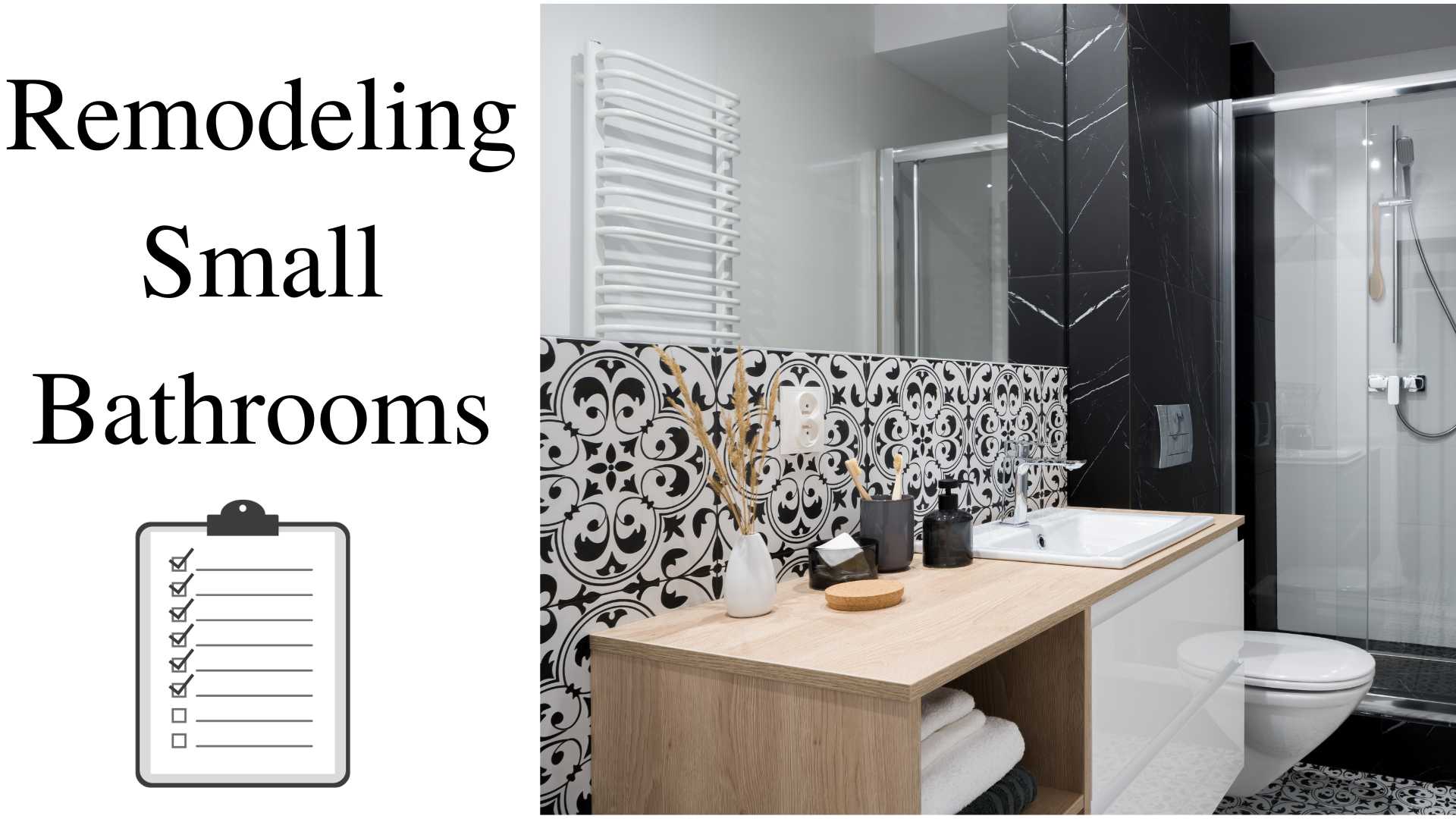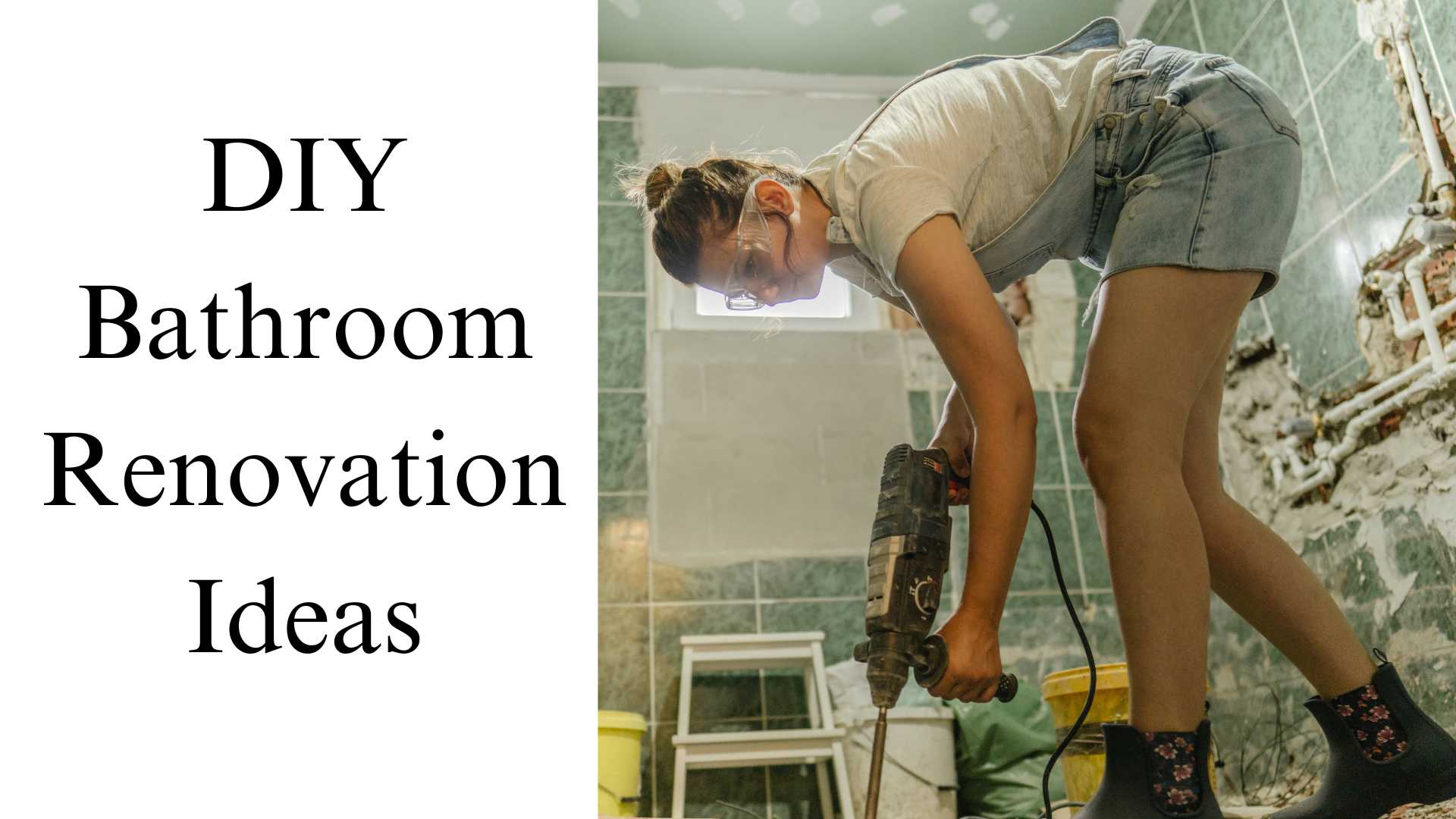Tackling a bathroom renovation can feel daunting, especially when you need more space. You might find yourself asking: How can I maximize storage? Is there a way to make this tiny space feel less claustrophobic? How to remodel a small bathroom effectively is a question that many homeowners grapple with. The good news is a small bathroom offers a unique opportunity to create a cozy, efficient, and stylish space without the overwhelming choices and potential expenses of a more extensive renovation.
In this guide, we will explore practical tips, design hacks, and strategic choices that will not only answer the burning question of how to make the most of your bathroom space but will also help transform it into one of your favorite corners of the home.
Understanding Your Bathroom’s Potential
When beginning the remodeling journey, evaluating your bathroom’s present layout and features is crucial. Take a step back and assess the bones of the space. Are there architectural features you love? Perhaps a window that lets in natural light or a uniquely shaped corner that could become a focal point?
Highlighting these features can give your small bathroom a distinct personality.
However, small bathrooms aren’t without their challenges. Sometimes, the existing layout might seem like it’s working against you, with fixtures placed in awkward locations or insufficient storage solutions. But this is where creativity comes in.
By visualizing different configurations or exploring innovative design solutions, you can make the existing space work to your advantage.
The silver lining with small bathrooms is that their size can be a hidden blessing. You’ll likely spend less on materials with less square footage than a larger bathroom.
This might allow for splurges in other areas, such as high-end fixtures or tiles. It’s all about perspective: see the small size not as a limitation but as an opportunity to carefully curate every inch for maximum functionality and style.
Printable Small Bathroom Remodel Checklist
Setting a Budget
One of the foundational steps in any remodeling project is establishing a realistic budget. While the space may be limited for small bathrooms, the choices certainly aren’t. Begin by distinguishing between your must-haves and your nice-to-haves.
This distinction becomes especially important in smaller spaces, where every item and feature should serve a clear purpose. Prioritizing essentials ensures you allocate funds to the most critical parts of the renovation.
Hidden costs can lurk behind the walls and under the floors. For instance, older homes might present unexpected challenges such as outdated plumbing, mold growth, or structural issues. It’s always wise to allocate a portion of your budget (typically 10-20%) for unforeseen expenses.
This financial cushion can be a lifesaver, preventing stressful situations and ensuring your project doesn’t stall halfway.
Remember, quality often trumps quantity in a small bathroom remodel. Instead of incorporating every latest trend or gadget, select durable, high-quality materials and fixtures that will stand the test of time.
This approach adds value to your home and ensures you won’t revisit repairs or updates anytime soon.
Lastly, always keep the bigger financial picture in mind. While it’s tempting to splurge on that luxury faucet or designer tile, weigh these choices against your budget.
Sometimes, making small compromises can lead to significant savings without compromising the overall aesthetic or functionality of the space.
Space-Saving Design Ideas
In the world of small bathrooms, every inch counts. Thus, optimizing the space with clever design tricks can make a difference.
One of the first things to consider is vertical storage. Think upwards rather than outwards: tall cabinets, over-the-toilet shelves, or vertical towel racks can maximize storage without eating into your limited floor space.
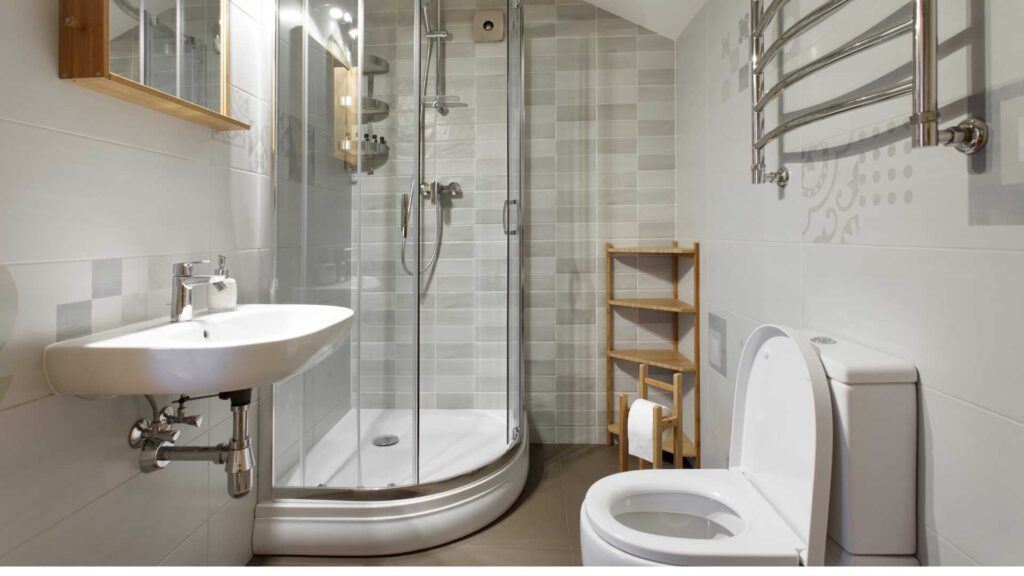
Wall-hung fixtures are another ingenious solution.
Floating vanities, for example, can create an illusion of more floor space, making the room appear less cramped.
Wall-mounted toilets, too, free up some valuable inches and lend a modern, clean look to the space.
Mirrors are a time-tested trick that works wonders in compact spaces. A well-placed, large mirror can virtually double the perceived space of a bathroom. Moreover, it enhances the brightness by reflecting light, adding to the illusion of a more expansive room.
Corner sinks and fixtures can also be game-changers. Traditional placements might interrupt the traffic lane in a bathroom, but corner installations can often alleviate this issue, offering functionality without obstructing movement.
Lastly, remember that less can often be more. Avoiding the temptation to fill every nook and cranny allows the bathroom to breathe. A minimalist approach, focusing on essentials and streamlining designs, can make your small bathroom feel spacious and uncluttered.
Choosing the Right Materials
Materials play a significant role in determining your bathroom’s aesthetics, longevity, and functionality. Tiles are often the go-to for bathroom walls and floors due to their water-resistant nature.
When selecting tiles, it’s essential to consider their type.
Ceramic tiles are cost-effective and come in various colors and patterns.
Porcelain, being denser and less porous than ceramic, offers better water resistance and durability.
For those looking for luxury, natural stone tiles like marble or granite provide an elegant look, though they might require more maintenance.

Countertop materials also deserve careful consideration.
While marble countertops ooze luxury, they can be porous and may stain easily.
On the other hand, Quartz offers a blend of natural beauty and resilience, making it a popular choice for many homeowners.
Laminate or solid surface countertops can be more budget-friendly and come in many designs and finishes to complement any aesthetic.
In a space as moisture-rich as the bathroom, it’s vital to prioritize water and moisture-resistant materials.
Whether it’s the paint you use (opt for semi-gloss or high-gloss finishes that repel moisture) or the type of wood for cabinetry (sealed and treated woods are preferable), ensuring materials can withstand the humid environment will save you from future headaches and repair costs.
Lastly, while aesthetics are crucial, always keep practicality in mind. Slip-resistant flooring, for instance, is a must-have, especially in wet areas.
Consider materials that balance beauty, durability, and safety to ensure your small bathroom stands the test of time.
Lighting and Ventilation
Lighting is the unsung hero of any bathroom, tiny ones. Proper illumination can make tasks like shaving or makeup application easier and play a pivotal role in enhancing the space’s ambiance.
Combining natural and artificial lighting can produce the best results for small bathrooms.
If you have a window, make the most of it. Natural light can make the room feel airy and open, breaking the confines of limited space. For privacy, consider frosted glass or light-filtering shades that allow light in while ensuring seclusion.
In terms of artificial lighting, layered lighting can be highly effective. Start with ambient lighting to brighten the entire room, then add task lighting around mirrors or sinks.
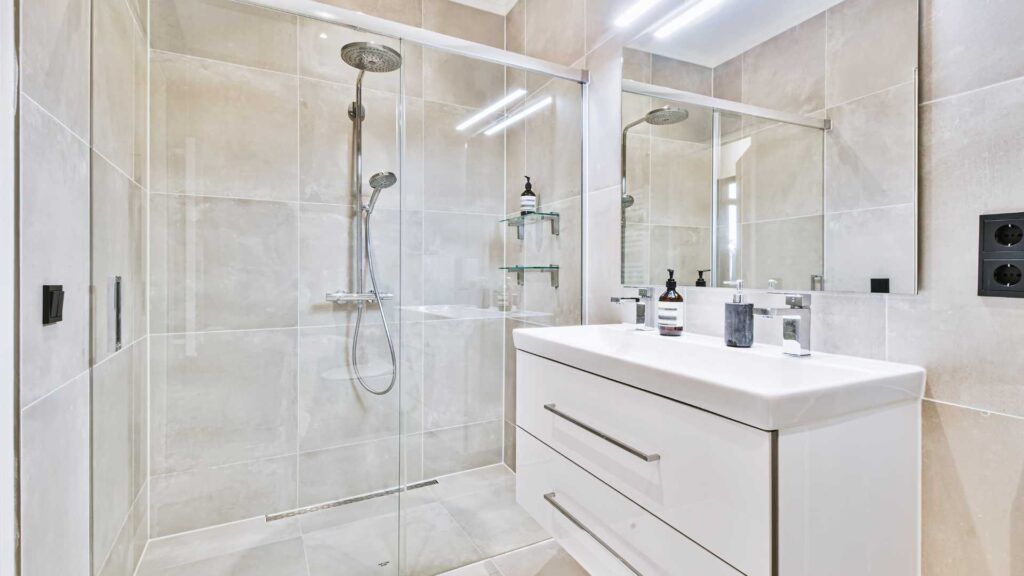
Finally, consider accent lighting to highlight specific areas or decor. LED lights are energy-efficient and come in various color temperatures, allowing you to set the desired mood.
Ventilation is equally crucial in a bathroom setting. Proper ventilation ensures that moisture and humidity, inevitable in bathrooms, get effectively whisked away. Without it, you risk mold and mildew growth, which can harm your health and the longevity of your bathroom materials.
An exhaust fan is a must-have. When selecting one, ensure it’s suitable for your bathroom size and has enough power to refresh the air efficiently.
Additionally, if your bathroom has a window, make it a habit to open it post-shower to let out steam and promote air circulation.
In essence, lighting and ventilation are about striking a balance between function and comfort. By providing the proper illumination and ensuring a moisture-free environment, you set the stage for a bathroom that’s not only beautiful but also healthy and durable.
Remodel a Small Bathroom with Functional Features
In a small bathroom, every element you introduce should serve a distinct purpose. The debate between shower vs. bathtub is a classic example. While bathtubs offer relaxation, they can consume a lot of space. On the other hand, a well-designed shower cubicle can be space-efficient while still providing a luxurious experience.
Consider features like frameless shower doors or clear glass panels to create an open and spacious feel. If you can’t let go of the bathtub, look into smaller or uniquely shaped tubs designed for compact spaces.
Innovative storage solutions are vital in preventing a cramped and cluttered feel.
Recessed medicine cabinets are a great way to utilize wall cavities for storage without protruding into the room.
Built-in shelves in showers or niches in walls can store essentials without taking up additional space.
Remember, the key is to find balance: enough storage to hide away daily necessities while maintaining a minimalist and clean appearance.
Efficient fixtures can also contribute significantly to a bathroom’s functionality.
Water-saving toilets with a dual flush option or faucets with aerators reduce water consumption and lead to savings on utility bills.
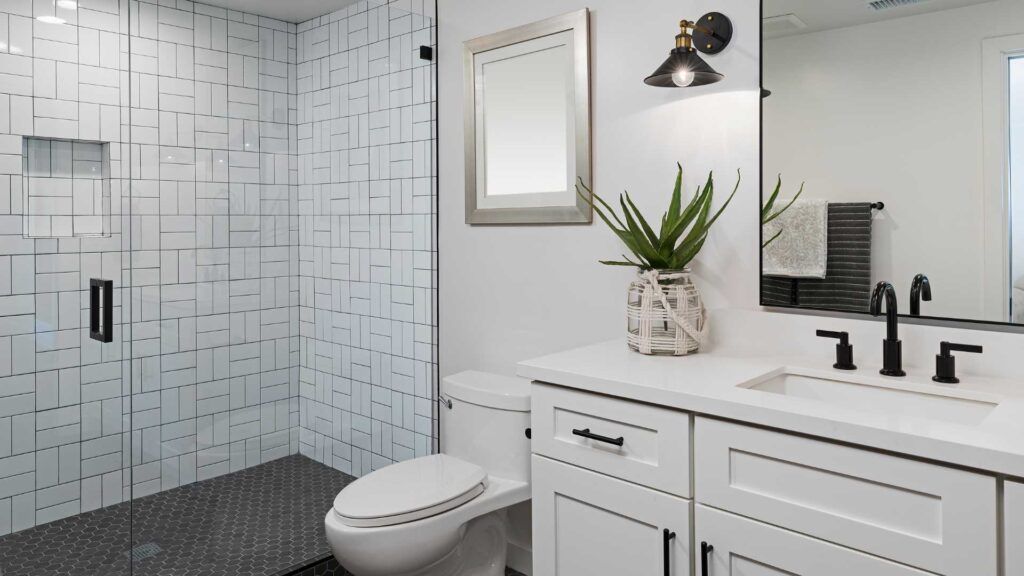
Moreover, consider fixtures with streamlined designs or compact sizes in small bathrooms to fit seamlessly without overwhelming the space.
In the end, functionality is about maximizing ease of use and efficiency in your space.
Every decision, from the fixtures you choose to the storage solutions you implement, should enhance your bathroom experience, making daily routines smooth and enjoyable.
Hiring Professionals vs. DIY
The decision between hiring professionals and adopting a DIY approach for your small bathroom remodel is multifaceted, often hinging on factors like budget, expertise, and the project’s complexity.
Starting with professionals, their expertise can be invaluable. They can foresee potential challenges, offer solutions grounded in experience, and ensure the renovation adheres to local building codes and standards.
Hiring a contractor might initially seem more expensive, but their knowledge can save you money in the long run by avoiding costly mistakes or redoing work.
Designers can also provide insights into the latest trends and space-saving hacks and even help you get discounts on materials or fixtures.
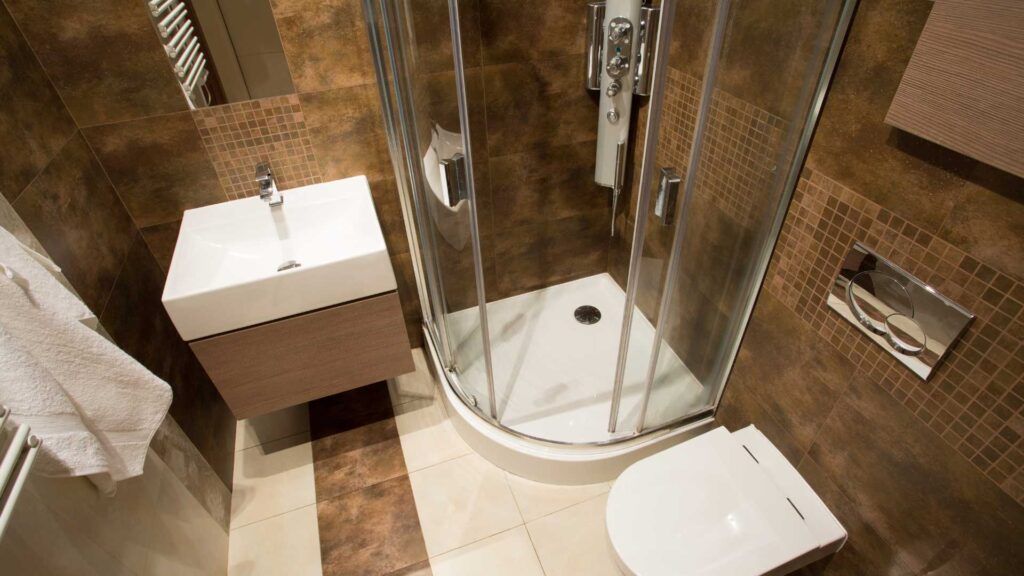
On the flip side, the DIY approach brings its own set of rewards.
Beyond the potential cost savings, there’s a sense of accomplishment and personalization in knowing you had a direct hand in creating your space.
DIY is particularly viable for smaller tasks like painting, installing hardware, or updating fixtures. However, being realistic about your skills and the time you can invest is essential. Some tasks, especially those involving plumbing or electrical work, might best be left to the experts.
It’s also worth noting that a hybrid approach is entirely feasible.
You could hire professionals for the more technical aspects and tackle the finishing touches independently. This way, you benefit from expert intervention while infusing the space with personal touches.
Ultimately, choosing between hiring professionals and going DIY depends on your comfort level, budget, and renovation scope.
Ensure you do ample research, seek recommendations if hiring professionals, and, most importantly, ensure the path you choose aligns with your vision for the space.
Staying Patient and Flexible
Embarking on a bathroom remodel is often filled with unexpected twists and turns, even in a compact space. While you might have a clear vision and a detailed plan, the reality of renovation can sometimes throw a wrench in the works.
Therefore, staying patient and maintaining flexibility can be the keys to navigating the process smoothly.
Unexpected challenges can emerge, especially once the renovation starts in earnest. You might uncover outdated plumbing that needs replacing, hidden water damage, or even structural issues that were previously undetected. In such cases, it’s essential to approach the situation with a problem-solving mindset rather than getting bogged down by setbacks.
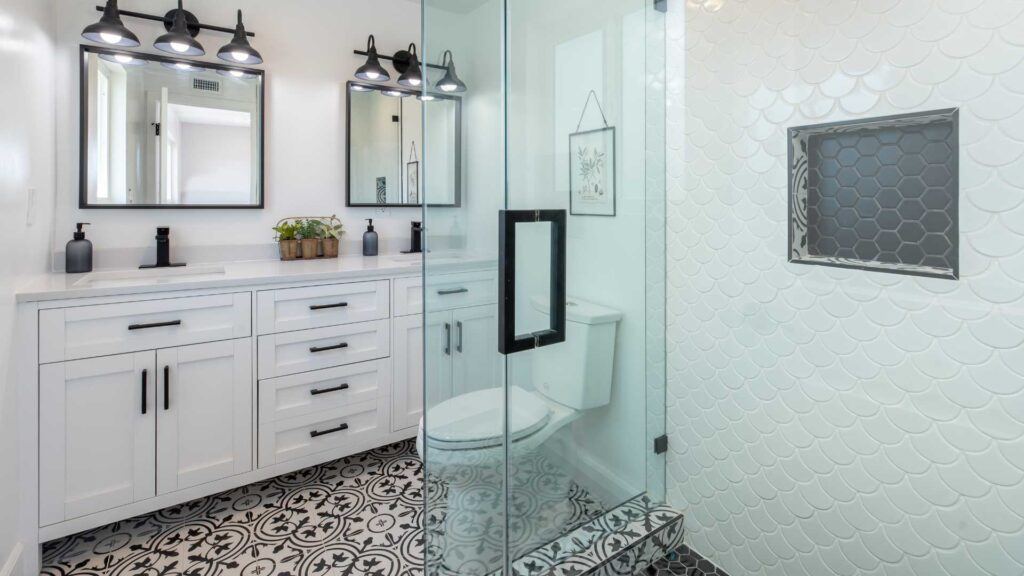
Timeline adjustments are a common aspect of renovations. While everyone desires a quick turnaround, quality work takes time. Delays can arise for various reasons – back-ordered materials, unforeseen challenges, or changes you decide to make midway. Embracing a patient approach ensures you don’t rush decisions or work, leading to better results.
Lastly, it’s worth noting that while planning is invaluable, being open to change can be beneficial. Maybe a material you initially wanted is out of stock, or a design idea you thought would work doesn’t fit as seamlessly as imagined.
Staying flexible allows you to adapt and potentially discover even better solutions.
In essence, remodeling is as much about the journey as the outcome. Approaching the process with patience, resilience, and a willingness to adapt will make the experience more enjoyable and lead to results that exceed your initial expectations.
Final Thoughts for Your Small Bathroom Remodel
Remodeling a small bathroom presents a unique set of challenges. Still, it can be transformed into a functional and stylish oasis with thoughtful planning, suitable materials, and creativity.

Whether you decide to roll up your sleeves and dive into a DIY project or trust the expertise of professionals, the key lies in understanding the space’s potential and optimizing every inch.
You’ll confidently navigate the renovation journey by setting a realistic budget, prioritizing essential features, and embracing patience and flexibility.
Remember, the beauty of a small bathroom lies in its intimacy and charm. With careful consideration and design choices, even the tiniest space can exude luxury and comfort, proving that size isn’t always everything.
As you embark on this transformative adventure, let your vision guide you and relish the rewarding experience of seeing your dream bathroom come to life.

